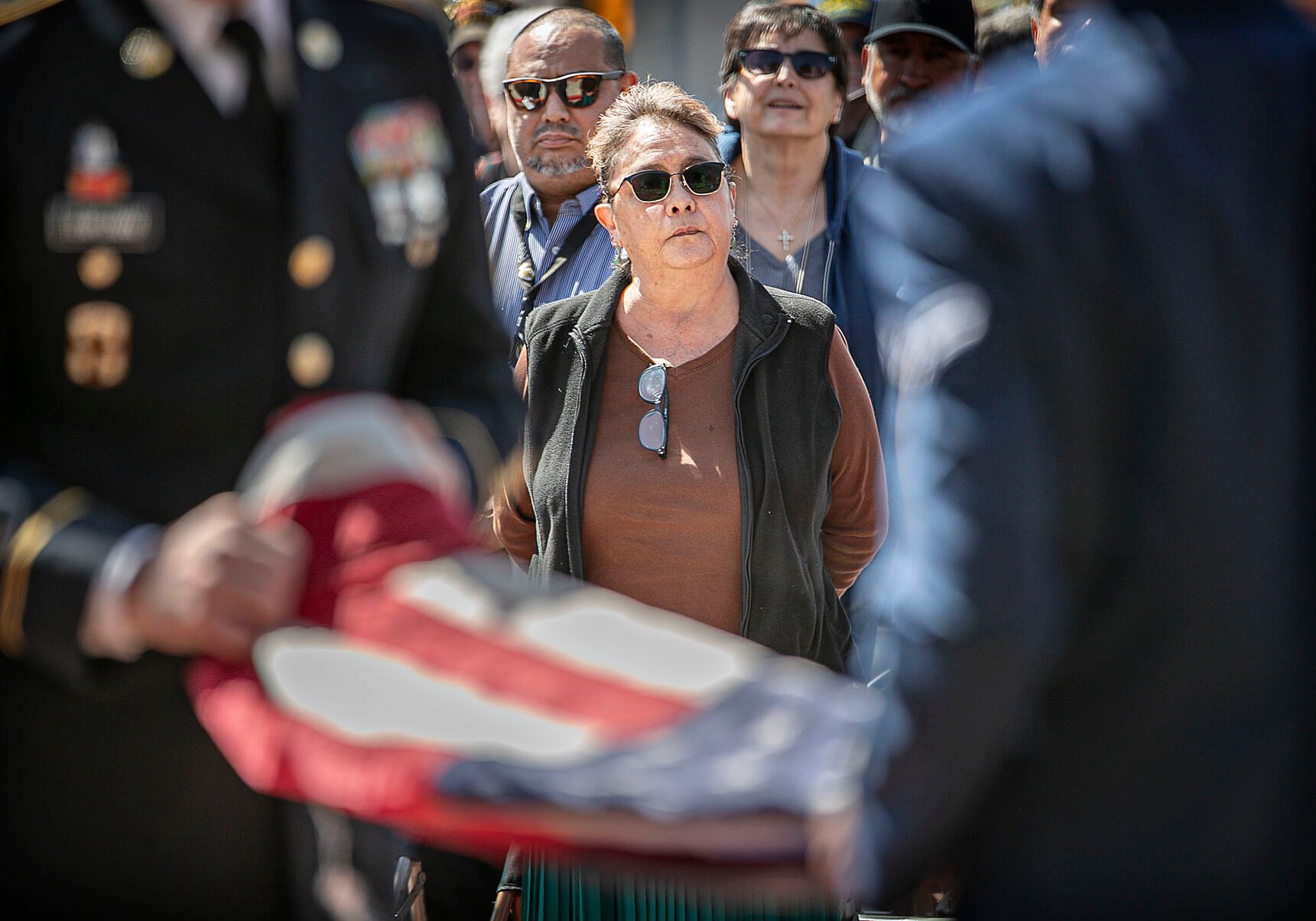
"It was an honor to take care of my father,” Juanita DeHerrera-Clements said Tuesday evening, hours after DeHerrera died.
"He is in such a better place,” she said. "He’s no longer suffering.”
Over the previous few days, DeHerrera had suffered a series of transient ischemic attacks, also known as mini strokes. They left him incapacitated and eventually led to his passing.
‘A very good man’
DeHerrera was born in Costilla, a small, rural community near the New Mexico-Colorado border, on Oct. 8, 1919, to Meliton and Lupita DeHerrera. He was one of 14 children who learned the value of a hard day’s work on a ranch at their homestead.
When Valdemar DeHerrera was growing up, Costilla had a vibrant population of nearly 3,000 residents, most of whom were ranchers. Today, the Northern New Mexico community is home to fewer than 100 full-time residents, according to the U.S. Census Bureau.

Valdemar DeHerrera blows out the candles on his cake Sept. 22, 2023, during his 104th birthday party at 101 Bar and Grill in Garcia, Colo.
"My father was an amazing man,” DeHerrera-Clements said proudly. "Educated. He was very smart. He had a very good personality. He was a hard worker, a good provider, a wonderful father, grandfather, brother. He was a very good man.”
That grit and fortitude may have helped him survive the brutality and suffering he endured during his captivity by Japanese soldiers near the beginning of World War II.
Refusing to surrender
After Japanese warplanes attacked the U.S. military base at Pearl Harbor, Hawaii, on Dec. 7, 1941, the United States Army Forces in the Far East were tasked to push back against the Japanese and to delay Japanese action at the mouth of Manila Bay, according to the National World War II Museum. "Their main objective was to serve as a buffer between the Japanese and the American colonial possession of the Philippines,” the museum states. They succeeded until December 1941.

The Japanese military invaded Luzon, Philippines, in January 1942.
"After the attack on Pearl Harbor, troops were placed on half rations,” the museum’s website reads. "These soldiers had to make these sacrifices in order for forces heading into the Pacific to have supplies,” the website reads. Commanding General Douglas MacArthur understood what was going on and promised the Filipinos extra troops, planes and supplies were coming to help them.
MacArthur’s promises never materialized. During the Battle of Bataan, troops suffered from disease, hunger and untreated wounds; they experienced horrific battlefield conditions. Despite dwindling supplies, American and Filipino troops were able to fight for three months. Eventually, they surrendered to Japanese troops and were forced onto what became known as the Bataan Death March, hell ships and slave labor.
DeHerrera did not have to endure the Death March, which began April 9, 1942, but was captured and imprisoned by the Japanese. He was among allied soldiers who managed to escape to Corregidor Island, but the men’s supplies ran out quickly, and their own government told them to surrender.
Instead, the troops adopted guerrilla tactics — sharpening sticks into spears and devising traps as Japanese soldiers closed in. DeHerrera was among those who were eventually brought to Japan and then Manchuria as prisoners of war. As POWs, they were forced to work in factories, where they labored in grueling conditions. His ordeal lasted three years.

Valdemar DeHerrera and his wife, Connie, are shown at their home in Alamogordo in 2017. DeHerrera was kept as a prisoner of war in Manchuria following the Battle of Bataan.
